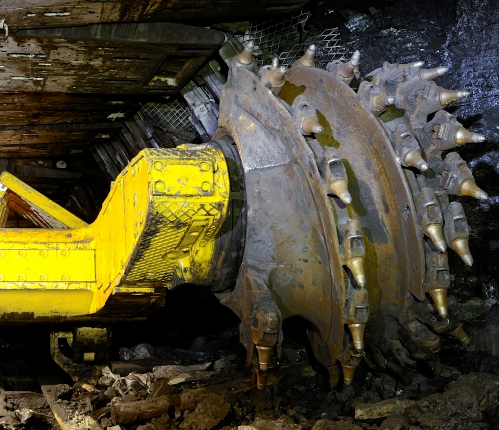Heavy machinery, especially Mining, Industrial or Farming Equipment, requires constant maintenance to keep it in good working order. Conversely, poorly maintained large machinery equipment runs inefficiently. Breakdowns are costly and safety is also an important consideration.
Below we have listed 5 steps that can significantly extend the life of heavy machinery, improving the return on investment from these important purchases. In today’s global manufacturing world, even greater value can be extracted if you have a global knowledge capture and distribution system such that this knowledge of machinery maintenance can be effectively shared across your organization – letting you reap even greater benefits on a much wider scale.
Here are five tips on machine maintenance to extend the life of your equipment:
1. Stay on top of large machinery operator training
Many types of large machinery have multiple operators. One of the ongoing inspections on any checklist should be overseeing the correct operation of the equipment.
Large machinery should be inspected as soon as it is purchased. Operator training is usually done at that point, but training needs to be kept up. Employees come and go, skills become rusty and poor operation leads to breakdowns.
Operator manuals can be revised for the specific work situation. They can be rewritten in simpler language. A short manual can be provided to each operator for easy reference. And, if you operate in a paperless environment, you can rest assured operators use the most current version of each manual.
One other note is to identify best practices, which can then be applied to other facilities or geographic locations. The knowledge you learn about how to maintain your equipment can become quite valuable – be sure to best leverage this important knowledge and use it at every applicable location.
2. Add and test lubricants frequently
Lubricants reduce friction around any moving part. A schedule of good lubrication maintenance extends the life of large machinery equipment and parts.
Lubrication is one of the first and most important of maintenance checks. Look for signs of excess oil or grease build-up on pistons. Check for leaks around oil seals.
Be sure to use the right lubricant. There are specific kinds of oil and grease for every component. Check the manufacturer’s recommendations.
Getting the lubricants checked is a good way to diagnose problems with large machinery. Experts analyze particles in the used oil. The makeup of any contaminants will indicate which part may be suffering from wear or breakdown.
3. Check for signs of wear
Vibration, shock, high temperatures, friction and age all contribute to the breakdown of parts in heavy machinery.
- Vibration can come from gears and belts that are out of alignment
- Shock can come from accidents and from poor operator technique
- High temperatures can come from extended use, friction, poor lubrication and worn parts, among other reasons
- Age affects many key components. Over time, belts will warp. Seals will dry and crack. Bolts will loosen and stretch out of shape. Age is a factor to monitor in equipment.
Should you discover wear and tear on any moving parts within your heavy equipment, be sure to quickly perform the necessary replacement of any worn parts.
4. Keep large machinery clean, and maintain a clean environment
There are many seals and filters in place on heavy machinery to keep working parts clean and free of contamination.
- Seals should be inspected regularly to make sure they’re in good condition.
- Filters should be inspected and changed regularly.
- Breathers should be kept clean to avoid creating a vacuum in the cab which will suck contaminants into the cab. The electronics in the cab are susceptible to breakdown if contaminated. This impacts the clutch, for example.
Large machinery should be stored in a shed or other building if at all possible. Exposure to wind and weather can lead to rust and rot. The machinery should be run periodically if it is not in use.
5. Have a maintenance and repair schedule, and keep good records
Fluids, tires, tracks and electrical systems are among the components that have to be checked regularly for preventive maintenance. Know what needs to be inspected and when. Here are some examples of how to maintain equipment.
- Power transmissions have many moving parts that need to be maintained in top condition. Gearboxes need to be checked for lubrication, vibration and damage to parts.
- Friction materials, seals, gaskets and bearings all need to be inspected for wear and replaced. Gears and shafts usually last a long time and don’t need to be replaced often, if at all.
- Drive train components need constant monitoring. Check pulleys and v-belts on CVT transmissions for alignment and wear. Check sprockets for correct meshing with chains and for breaks.
- Test the oil to diagnose problems. Change filters frequently.
- Bearings keep great amounts of force running smoothly and are vital to large machinery performance. Check bearing lubrication often. Maintaining bearings well extends their life.
- Lubricate gears frequently.
- Do a seal check to prevent bearing raceway contamination.
- Run torque checks on the bolts. Bolts can elongate and creep over time.
How DELMIA Apriso can help with machine maintenance
Do you want to maximize uptime within your manufacturing environment? We can help with that. DELMIA Apriso Maintenance works in close coordination with other DELMIA Apriso applications to assist your maintenance strategy.
Author Bio
This is a guest post from Jessica Noonan, who is a freelance writer knowledgeable on manufacturing operations.
